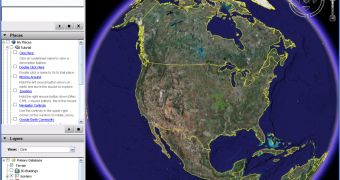Google Earth, the downloadable application that allows users to view satellite maps and imagery with the entire world, gets a new update for the KML elements. Because these days the Mountain View company is hosting the Google Developer Day, it's almost obvious that most of the products promoted in this period are especially addressed to developers. This time, Google Earth is updated with improved documentation over the KML files that will allow developers to create Google Earth files easier. Basically, the documentation concerns the elements included in a KML file such as placemarks, cameras and photo overlay.
The Google Earth Blog sustained that this is the KML 2.2 beta documentation, being updated from version 2.1. As we expected, this new documentation provides valuable information about the recently introduced features in Google Earth, allowing the developers to manipulate and include them into the KML files.
"Cameras - New tags which will enable us to set up a camera in KML so you can rapidly change the camera view to better view the 3D content inside Google Earth. Placemark Info windows - much better control for href tags for KML/KMZ in info windows - you can force KML/KMZ interpretation for non .kml or .kmz extensions for dynamic fetches, also allows explicit 'pops' of other info windows via # reference. This has some very interesting user interaction capabilities," the Google Earth Blog described some of the updates.
In the recent period, the Mountain View company struggled to make Google Maps and Google Earth more powerful, adding some useful functions to both of them. For example, Google Maps received the innovative street-view imagery while the downloadable application Google Earth received interoperability with the web-based tool. Using this last improvement, you can view a certain location opened in Google Earth straight into your web browser through Google Maps.
If you want to download the latest version of Google Earth, you can take it straight from Softpedia.

 14 DAY TRIAL //
14 DAY TRIAL //